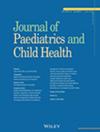Osteocalcin: A potential marker to identify and monitor girls with rapidly progressive central precocious puberty
Abstract
Aim
To evaluate the suitability of serum osteocalcin (OC) as a marker to distinguish between rapidly and non-rapidly progressive central precocious puberty (RP-CPP and NRP-CPP), as well as its potential to assess growth rates following treatment with gonadotropin-releasing hormone agonist (GnRHa).
Methods
Serum levels of OC were measured using enzyme-linked immunosorbent assays in girls diagnosed with either RP-CPP or NRP-CPP as well as in normal control subjects. Receiver operating characteristic (ROC) curve analysis was performed to determine the cut-off value for OC. Multivariate linear regression analysis was used to analyse the main influencing factors associated with OC.
Results
Serum OC levels were higher in the CPP girls when compared to normal controls (110.76 ± 43.69 vs 55.97 ± 20.96 ng/mL, P < 0.001). The level in the RP-CPP group was higher than the NRP-CPP group (153.28 ± 33.89 vs 88.33 ± 29.26 ng/mL, P < 0.001). The cut-off value of OC levels for distinguishing between RP-CPP and NRP-CPP was 107.05 ng/mL, the sensitivity was 94.7% and the specificity was 77.8%, which was superior to using the basal luteinising hormone (B-LH) levels, and the area under ROC curve (AUC) were 0.933 versus 0.695, respectively. Following 1–2 years of treatment with GnRHa for girls with CPP, both OC levels and the growth rates decreased to pre-pubertal values. B-LH levels, bone age and body weight were also significant factors, which affected OC levels.
Conclusions
Serum OC levels may be a useful marker for distinguishing RP-CPP from NRP-CPP. In addition, it was also found to be a useful predictor for growth rate during GnRHa treatment.

 求助内容:
求助内容: 应助结果提醒方式:
应助结果提醒方式:


